#apple vision pro spatial computing
Explore tagged Tumblr posts
Text
#apple vision pro#spatial computing#apple vision pro review#apple#vision pro#apple vision pro hands on#vision pro apple#apple vision pro features#apple vision pro impressions#apple vision pro price#apple vr headset#apple vision pro spatial computing#apple vision pro demo#unveiling apple vision pro: the future of spatial computing#apple vision pro eye tracking#apple vr#spatial computer#apple vision pro release date#apple vision#apple spatial computer
0 notes
Text
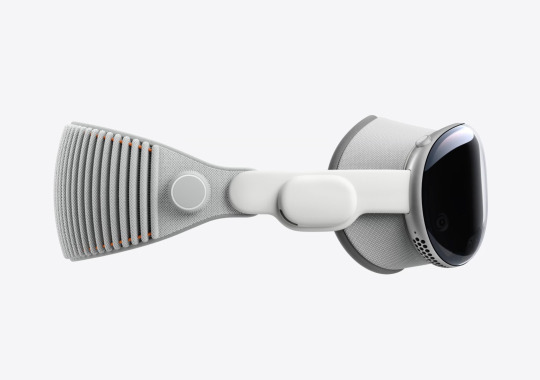
Apple Vision Pro.
2 notes
·
View notes
Text
The new Apple Vision Pro ad got me hyped

2 notes
·
View notes
Text
Apple Vision Pro 引入全面無障礙功能,讓每個人都能更輕鬆地溝通和互動
Apple 最近宣布了一系列令人期待的無障礙功能更新,將在其全新的 visionOS 系統中推出。這些功能主要設計用來幫助聽力障礙者更好地參與到日常對話和應用程序中的音頻內容。Apple Vision Pro,作為公司的旗艦產品,將在無障礙設計方面邁出重要一步。 visionOS 將提供全系統的即時字幕功能,這意味著無論是在實時對話還是應用程序的音頻播放中,聽障或重聽的用戶都能跟隨對話。特別是在 FaceTime 上,即時字幕功能將使更多用戶能夠利用其 Persona 輕鬆享受連接和協作的獨特體驗。此外,Apple Vision Pro 將支持在 Apple Immersive Video 中通過窗口欄移動字幕,並支持更多為 iPhone 設計的助聽設備和人工耳蝸。 對於視力障礙用戶,visionOS…

View On WordPress
#accessibility features#Apple Immersive Video#apple vision pro#AR glasses#無障礙功能#空間計算#蘋果視界專業版#蘋果沉浸式視頻#虛擬實境#虛擬實境資訊#虛擬實境新聞#FaceTime accessibility#FaceTime 無障礙#hearing devices#inclusive technology#live captions#Spatial computing#VisionOS#vr#vr news#vr news today#助聽設備#包容性科技#即時字幕#擴增實境眼鏡
0 notes
Text
e456 — Not a Bot
The most recent spatial computing experiences, new innovations in AI from Google’s Genie, content badges signaling human created material, and a lively discussion on skill disintermediation.
Photo by Ochir-Erdene Oyunmedeg on Unsplash Published 4 March 2024 Andy, Michael and Michael are back in (virtual) studio together to talk tech. They check in on the latest spatial computing experiences with Michael R, discuss new AI announcements & trends and wrap up with several games. The co-hosts start off the show with a roundup of the recent news articles on the Apple Vision Pro along…

View On WordPress
#ai#Apple Vision Pro#badge#Downpour#Genie#google#job#little big planet#Not by AI#Pitfall#skills#Spatial computing#Video Game History Foundation
1 note
·
View note
Text
youtube
#Spatial Computing#Apple Vision Pro#Augmented Reality#Virtual Reality#AR#VR#MR#Mixed Reality#Meta Quest#Luxeon#Youtube
1 note
·
View note
Text
Really good article on tech as an industry
42 notes
·
View notes
Text
Spacetop G1, World’s first Laptop that uses AR Glasses instead of a Display
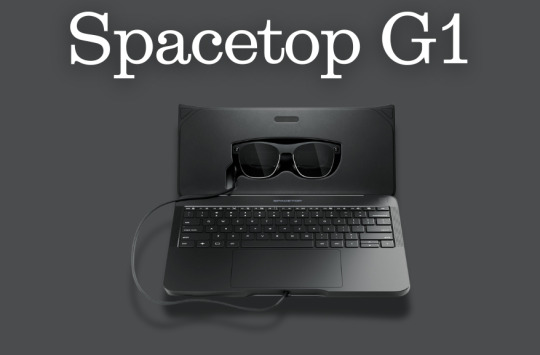
A laptop that employs augmented reality glasses as a display was called the Spacetop G1 system, and it was shown to a thousand productivity pioneers by the tech firm Sightful last year.
The upgraded Gen 1 device removes the requirement for the user to stoop over a tiny screen when working remotely on a laptop by placing a 100-inch virtual display directly in their eyes.
In this blog, The TechRobot will showcase the World’s first AR laptop: Spacetop G1. So let us begin.
What is Spacetop G1?
Sightful’s Screenless Laptop, the Spacetop G1, combines a computer with comfortable, lightweight augmented reality glasses. Running on the device is SpaceOS, a spatial operating system with an emphasis on online operations intended for productivity.
The weight of the AR glasses is 85 grams, but the Vision Pro, depending on the Light Seal, weighs between 600 and 650 grams. The keyboard is bulkier compared to a MacBook Air or iPad Pro, measuring less than 12 inches in width and weighing three pounds.
Cost of AR Laptop
The Screenless Laptop, Spacetop G1 charges $1,700 and is just a keyboard with spectacles attached.
Spacetop G1 Specs
Spacetop G1, features a Qualcomm Snapdragon QCS8550 CPU, Kryo GPU, Adreno 740 AI, dual eNPU V3, 48 INT8, 12 FP16 TOPs, 16 GB LPDDR5, 128 GB UFS3.1 storage, and 8-hour battery life.
They have two OLED display screens, a 50° field of vision, a 90Hz refresh rate, and very crisp text rendering.
The glasses enable Wi-Fi, Bluetooth, 5G, and a 5MP camera. They also contain a microphone for use in online meetings.
Benefits of AR Laptops
1. Endless View
With Spacetop’s Virtual Desktop, you may get amusement and information without having to navigate around, making it a convenient substitute for real screen space. Although it’s not the only solution with this functionality, this one could be the easiest to use.
A standard keyboard and touchpad, Spacetop’s AR glasses, and a perhaps lower price tag might allow customers to enjoy endless screen areas without sacrificing functionality. For individuals who would rather have a more ordered workstation, this would be a time-saving alternative.
2. Absolute privacy
Multi-monitor laptop attachments should not be used in public areas due to the increased danger of uninvited eyes peeping at private information caused by an excessive number of physical displays. Although privacy screens are available on certain computers and monitors, they are limited to one monitor.
To solve this, Spacetop is a Screenless Laptop, letting the user see their screen alone until it is shared with others. But it also means that those standing close to the user can’t see the screen without their glasses.
3. Improved posture
Laptops’ screens are firmly attached to the keyboard, making them portable yet uncomfortable. Some people find relief from this neck pain by attaching a desktop monitor.
The screenless laptop, Spacetop, provides a more comfortable height and does away with the need for arms or ergonomic monitor supports. Due to this, laptops are a better choice for use at home or in the workplace.
4. Laser Focus
Spacetop G1 is an Augmented Reality (AR) device that reduces visual distractions so users can work productively and enjoy their free time. The apps it may utilize, including Windows or macOS-based software and limited gaming, are restricted by its Android-based operating system and mobile hardware.
Notwithstanding these drawbacks, Spacetop provides a more practical experience than a typical computer since it places all of the necessary components in front of and surrounding users. Instead of letting others decide for them, users may choose whether to allow virtual distractions to affect them.
Highlight – Introducing Travel Mode For Meta Quest Headsets
Best AR Glasses for Laptops
1. Apple AR Glasses
Apple plans to develop AR glasses that look like conventional spectacles with a built-in display. A prototype of the glasses has a thick, attractive frame and resembles high-end luxury sunglasses. With references to Project Starboard and reports of a glassOS, the prototype is anticipated to function on iOS 14.
Though it could take a few more years for a public release, rumors indicate that Apple has already started the second phase of development. The glasses will have the ability to add prescription lenses, gesture-controlled instructions that connect with the Apple Watch, and a true vision display on both lenses.
Possible capabilities include the ability to use virtual things in real-world settings, do activities without using a phone, and enable immersive phone conversations and remote collaboration software.
2. Meta Glasses
Rebranding Facebook to Meta, Mark Zuckerberg is concentrating on augmented reality glasses and headsets. The business plans to deliver Meta spectacles, a prototype of their augmented reality spectacles, in late 2024. The Project Nazare and Project Aria prototypes provide a fully functional augmented reality experience, with 3D visuals and an elegant design. It is anticipated that the Meta Glasses will include an immersive experience with radio, speakers, and cameras, a holographic display with built-in projectors, batteries, and sensors, and a broad field of vision. In 2024, the prototype is anticipated to be released.
3. Xreal Air 2 Ultra
The Air 2 Ultra glasses from Xreal are an improvement over the Air 2 model and are aimed at competing with Apple’s Vision Pro and Meta’s Quest 3 headsets. Complete positional tracking, a form factor akin to eyeglasses, and compatibility for immersive AR apps, TV viewing, and flat-screen gaming are all features of the Air 2 Ultra.
It has a 52-degree field of vision, 500 nits of brightness, two cameras for environmental mapping, hand tracking, and compatibility with Xreal’s Nebula AR environment.
Is AR safe for your eyes?
Prolonged use of AR might result in headaches, nausea, and straining of the eyes. This is a result of our eyes continually focusing on objects at different distances when using AR. This can cause pain and eye tiredness.
Conclusion
The future of laptops with AR like the Spacetop G1 marks a breakthrough in laptop technology by utilizing augmented reality to provide a 100-inch virtual display that improves user posture, productivity, and privacy.
The Spacetop G1 presents a new option for remote work by addressing typical ergonomic concerns associated with standard laptops by mixing AR glasses with a powerful computing machine and the SpaceOS operating system.
Despite several drawbacks associated with its Android-based operating system and the possibility of eye discomfort after extended usage, the Spacetop G1 breaks new ground in augmented reality technology by offering consumers a more useful and engaging experience.
#spacetop1#ar#vr#ar glasses#laptop#virtual reality#augmented reality#mark zuckerberg#elon musk#meta ai#facebook
6 notes
·
View notes
Text
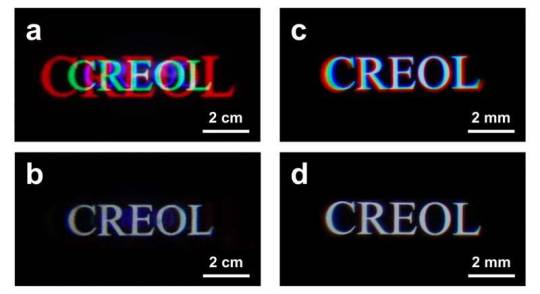
Achromatic diffractive liquid-crystal optics for virtual reality displays
As a promising candidate for the next-generation mobile platform, mixed reality (MR) such as Apple Vision Pro and Meta Quest Pro (both are passthrough virtual reality headsets) has the potential to revolutionize the way we perceive and interact with various digital information. By providing more direct interactions with digital information, MR is one of the key enablers for metaverse, spatial computing, and digital twins that have found widespread applications in smart tourism, smart health care, smart manufacturing, and smart construction, just to name a few. To further enhance the human factors and ergonomics of MR displays, it is essential to improve the overall user experience, particularly for long-term wearing comfort. To achieve this goal, an ultracompact formfactor and a lightweight device are key goals. In a new paper published in Light: Science & Applications, a team of scientists, led by Professor Shin-Tson Wu from College of Optics and Photonics, University of Central Florida, U.S., and co-workers, have demonstrated an achromatic diffractive liquid-crystal (LC) optics system with an ultrathin formfactor and light weight.
Read more.
7 notes
·
View notes
Text
Apple Vision Pro: Reality Restyled, World goes Mad.
The tech world has gone berserk since Apple’s “Apple Vision Pro”, its first stab at spatial computing, was introduced. This ultra-modern virtual reality headset surpasses the boundaries of that very concept presenting a near invariant convergence between digital and non material. Let us look into the characteristics that have fired up this frenzy, exposing how it operates, its dazzling layout as well as what technological advances is driving all of these.

How it Works: Notably, Apple Vision Pro does not just cast an image onto your eyes it generates a realistic three-dimensional feeling. It, with the aid of innovative LiDAR technology and depth sensors maps around you in real time embedding digital elements within physical reality. Picture playing a game of chess on an augmented coffee table that leaps into the depths, or joining coworkers from all over the world in real time inside shared virtual space.The possibilities are mind-boggling.
Design that Dazzles: The so-called ‘high art’ brand that is Apple has not failed in terms of form factor as Vision Pro proves, which you can read below. The frame is lightweight aluminum that curves ergonomically around your face, a single piece of laminated glass functions as the lens housing all intricate technology inside. The available modular parts necessitate a comfortable fit for varietal heads. It’s just one of many demonstrations as to Apple pays with its quality designs which merge function and form.

Technology Powerhouse: The dual-chip architecture has driven this wonder. The M2 chip well known from Apple’s latest devices packs phenomenal processing power whilst the R1 is a breakthrough solution which focuses on sensor data, eliminating lag. This combined power in other words gives smooth and into reality real experiences without trembling neither with lags of some timely moments.

Craze Unfolding: This is a crowd of people waiting for the future to see, powered by Apple’s image as innovators and somehow hoping Vision Pro. Players expect to immerse themselves in hyper-realistic realms, creative professionals imagine unmatched collaboration tools and casual users dream about the ability to step into their dear movie or even memory reeling, pulsating is 3D. This isn’t just a device; it is a new paradigm in human-computer interaction.
Privacy Concerns: However even during the heights of excitement, there remains a cloud in privacy concerns. The dimension of questions about data collection and use also surrounds the Headset functionality to track your gaze and mapping it, besides identifying where you are. Apple requires user control and transparency, but trust has to be won; specifically for such a sensitive technology.
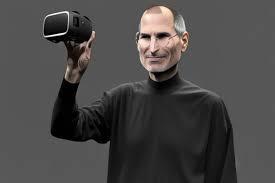
However worrisome, the Apple Vision Pro is a giant leap. It is more than a poshlost headset: it unlocks the doors of an entirely new age to computing where real and virtual fuse together. Whether it lives up to the hype remains to be seen, but one thing is certain: Apple Vision Pro has set ablaze the world and everyone waits with great anticipation.
3 notes
·
View notes
Text
[Image description: A tweet by joeyabanks that says, "This was the first frame from an Apple Vision Pro review that made me believe we're all going to be using and leaning into spatial computing soon enough. It always comes back to timers." Attached is a photo of two pots, each with a timer placed over it in virtual reality. DannyVegito replied, "for $3500 you can get shinigami eyes for pasta". /End ID]
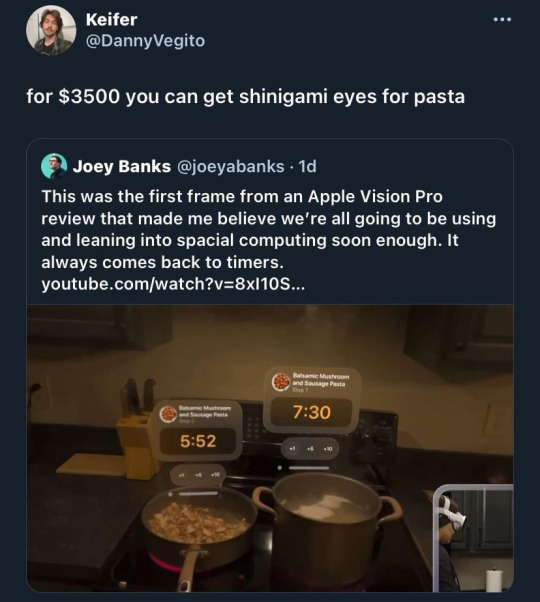
"we're all going to be using and leaning into spatial computing" this is a telltale sign of rich techbro brainrot. "oh lets reinvent the kitchen timer but worse and connected to wifi" fucking idiot
64K notes
·
View notes
Photo

Ever wondered how a Steam Deck can become a complete XR spatial computer? An ex-Apple Vision Pro engineer transformed this handheld gaming console into an all-in-one keyboard for extended reality applications. 🎮 This DIY project, called Bento, swaps the Steam Deck’s screen and grips for a custom chassis that fits perfectly under a keyboard, inspired by the idea of a “big virtual screen” for XR. Made open-source, the design files allow you to print and build your own at home. This innovation is a reminder that minimalism and functionality can go hand-in-hand in tech design. If you’re passionate about handheld gaming, custom PC builds, or XR hardware, this project highlights how creativity and technical skill can redefine device use. It’s a perfect example of pushing the boundaries of portable and spatial computing. Are you ready to explore the possibilities of turning your gaming hardware into a versatile XR device? Share your thoughts below! Discover more about custom computer builds and innovative projects at GroovyComputers.ca.
0 notes
Text
Virtual Reality Development: The Next Big Thing in Tech Innovation

Over the past decade, the world has witnessed incredible advances in technology—from smartphones and cloud computing to artificial intelligence and blockchain. But among these innovations, one stands out for its ability to fundamentally change how we interact with digital content: Virtual Reality (VR). As VR hardware improves and development tools evolve, virtual reality development is rapidly emerging as the next big thing in tech innovation, reshaping industries from entertainment and education to healthcare and design.
What Is Virtual Reality Development?
Virtual reality development refers to the process of creating immersive, interactive 3D environments that simulate physical presence. These environments are experienced through VR headsets, which track head and body movement and often include haptic feedback and spatial audio to enhance immersion.
At its core, VR development combines elements of game design, software engineering, user experience (UX) design, and 3D modeling. Developers use platforms like Unity or Unreal Engine to build virtual environments, program interactivity, and fine-tune the user experience.
Why VR Is More Than Just a Buzzword
While virtual reality has existed in some form since the 1960s, recent advancements have made it more practical, portable, and affordable. What once required an entire room and expensive hardware can now be experienced with standalone devices like the Meta Quest, HTC Vive, or Apple Vision Pro.
This accessibility is fueling a surge in VR innovation, leading to breakthroughs in a wide range of industries:
Gaming and Entertainment: VR is revolutionizing the gaming world by offering immersive gameplay that puts players directly inside the story. Games like Half-Life: Alyx, Beat Saber, and Resident Evil 4 VR demonstrate how developers can create rich, dynamic experiences that far surpass traditional screen-based gaming.
Education and Training: From virtual classrooms to flight simulators, VR offers experiential learning that boosts engagement and retention. Medical students can practice surgeries, engineers can explore 3D blueprints, and history students can walk through ancient civilizations.
Healthcare: VR is being used for pain management, exposure therapy, physical rehabilitation, and even surgical training. Its ability to create controlled, repeatable scenarios makes it a powerful tool for mental health and recovery.
Architecture and Real Estate: Architects use VR to prototype buildings and allow clients to “walk through” them before construction. Real estate agents can offer remote, interactive tours that make property shopping more accessible.
Remote Collaboration: VR meetings are becoming a real alternative to video calls, allowing teams to collaborate in shared virtual spaces. Companies like Meta and Microsoft are investing heavily in virtual workspaces to support the future of remote and hybrid work.
What Makes VR Development Unique?
Developing for VR is very different from traditional app or game development. The immersive nature of VR introduces new challenges and opportunities that developers must address.
Presence and Embodiment
In VR, users aren’t just watching a scene—they’re in it. This sense of presence requires a different design mindset. Everything from lighting and spatial sound to physics and motion must feel natural to avoid breaking the illusion.
Interactivity
VR users expect to interact with objects using natural gestures. This requires developers to think deeply about hand tracking, controller input, and physics-based interactions. Touching, grabbing, throwing, or manipulating objects should feel as close to real life as possible.
Performance Demands
VR requires high frame rates—ideally 90 FPS or more—to prevent motion sickness. This makes optimization critical. Developers must carefully manage resources, simplify 3D models, and reduce latency to deliver smooth, responsive experiences.
New UX Paradigms
Flat menus and buttons don’t work well in 3D space. VR developers must design interfaces that users can navigate intuitively—often by mimicking real-world objects like dashboards, control panels, or tools.
Barriers and Breakthroughs
Despite its promise, VR still faces hurdles:
Cost and Accessibility: While prices have dropped, high-quality VR hardware can still be expensive. However, mobile and standalone VR options are helping bridge the gap.
Content Creation: VR development requires specialized skills in 3D modeling, animation, and interaction design, which can raise costs and timelines.
User Comfort: Motion sickness remains a challenge, especially for new users. Developers must design comfort-first experiences with careful attention to motion, perspective, and interaction.
But with these challenges come opportunities. As AI and machine learning are integrated into VR development, content generation and personalization are becoming faster and more scalable. Procedural environments, intelligent NPCs, and adaptive storytelling are on the horizon, promising even richer virtual experiences.
The Future of VR Development
The next wave of VR innovation will be defined by:
Mixed and Augmented Reality (MR/AR): The lines between VR, AR, and MR are blurring. Devices that seamlessly transition between virtual and real-world views—like Apple’s Vision Pro—are expanding the potential use cases.
Social VR and the Metaverse: Persistent, shared virtual worlds are paving the way for social and economic ecosystems within VR. While the term “metaverse” is still evolving, the concept has energized developers and investors alike.
VR for All Ages and Abilities: Accessibility features and age-appropriate design are opening VR to more people, ensuring that the technology doesn’t leave anyone behind.
Conclusion
Virtual reality development is at the forefront of tech innovation—not as a passing trend, but as a foundational shift in how we experience the digital world. Whether it's transforming entertainment, enhancing education, or revolutionizing design, VR is setting the stage for the next generation of immersive technology.
As tools improve and creative minds continue to experiment, virtual reality will become more than just a platform—it will become a new reality. And developers are the architects shaping that future, one pixel, one experience, and one breakthrough at a time.
Get to us
VR Duct Aldwych, London WC2B 4HN
Ph: 020 8050 6021
0 notes
Text
What To Expect From Apple's Bold New Liquid Glass UI
Introduction:
As a step that's already disrupting the tech industry, Apple is getting ready to launch its newest innovation — Apple's new liquid glass UI. The revolutionary interface will revolutionise user interaction on Apple devices, presenting a more immersive, fluid, and intuitive experience than ever.
What is Apple's New Liquid Glass UI?
Apple's Liquid Glass UI is said to combine real-time dynamic elements with sophisticated glass-like visuals, featuring ultra-smooth transitions, depth, and light reflections that resemble real glass. It's a departure from flat design to something more immersive and tactile.
Key Features to Look Forward To:
Next-Generation Visual Appearance: Liquid transitions and glow-like reflections will add more visual beauty to the UI.
Improved Responsiveness: Closer touch feedback and quicker response times.
Deeper Integration with AR: Flawless layering of UI with AR content for an integrated mixed-reality experience.
Battery & Performance Optimisation: Even with the visual upgrades, Apple is targeting efficiency, taking advantage of its M-series chips.
Why It Matters:
This is more than a visual refresh — it's Apple restating its dominance in UX design. The liquid glass UI fits into Apple's broader move into spatial computing, perhaps laying the groundwork for next-generation hardware such as the Vision Pro and future iPhones.
Conclusion:
Apple's new liquid glass UI is a forward-thinking leap in design and functionality. As a developer, designer, or regular user, Apple's future ecosystem is set to be more interactive and visually appealing than ever.
#ApplesNewLiquidGlassUI#LiquidGlassUI#AppleDesign#iOSUpdate#macOSDesign#UIUXDesign#TechInnovation#AppleAesthetics#NextGenUI#AppleNews#DesignTrends#UserInterface#AppleEvent#FuturisticDesign#DigitalDesign
0 notes
Text
From spatial widgets to realistic Personas: All the visionOS updates Apple announced at WWDC
Apple’s updates to visionOS 26, the operating system powering its mixed reality headset, build on last year’s Apple Vision Pro spatial computer that blends digital content with the physical world. At WWDC, Apple announced a range of updates for both consumer and enterprise customers, from new spatial widgets and content to more realistic Personas and more. All widgets — including Calendar, shown…
0 notes
Text
Beyond Filters: The Deep Impact of VFX in Augmented Reality

Augmented Reality (AR) is no longer a futuristic concept—it’s here, it's evolving fast, and it's transforming the way we experience digital content in real-world environments. From retail apps and healthcare simulations to gaming and industrial training, AR has found a foothold across industries. But behind the seamless blend of virtual elements and physical reality lies a powerhouse of visual storytelling: VFX.
Visual Effects (VFX) in AR are not just aesthetic add-ons—they're the structural backbone of immersive design. They create believable, interactive, and emotionally resonant experiences. As AR adoption rises globally, the contribution of VFX artists is more critical than ever.
Why AR Needs VFX at Its Core
Augmented Reality overlays digital visuals onto the physical world through smartphones, AR glasses, or headsets. However, just placing a 3D object in front of you isn’t enough. For it to feel “real,” that object must obey the laws of lighting, depth, perspective, and interaction. That’s where VFX comes in.
VFX adds the layers of realism—shadows that change with light, reflections on surfaces, fog and mist that interact with movement, particle effects that respond to user interaction. Without these cues, AR visuals fall flat and feel disconnected from reality.
Take for instance an AR-based museum guide that brings ancient sculptures to life. Without believable texturing, shading, and environmental lighting—all the handiwork of VFX—the experience would feel gimmicky. With VFX, it becomes magical and emotionally engaging.
Blurring Boundaries: The Rise of Real-Time VFX in AR
One of the biggest advancements in recent years is the use of real-time VFX engines such as Unreal Engine and Unity. These platforms are enabling artists to create dynamic and reactive AR environments that respond to user actions instantaneously.
This isn’t just game tech—it’s shaping business. IKEA’s AR app lets users preview furniture in their homes, adapting scale, lighting, and even shadows in real time. Fashion brands are using VFX-enhanced AR filters that allow virtual try-ons, with cloth textures and movements mimicking real fabric behavior.
With Apple Vision Pro and Meta Quest devices pushing spatial computing forward, the demand for VFX artists who can design for volumetric spaces is exploding. Users don’t just see effects—they feel them, thanks to immersive VFX design.
Creating Emotion Through Visual Design
In traditional cinema, VFX elevates storytelling. In AR, it does something even more intimate—it wraps the viewer in the narrative. A successful AR experience isn’t just technically accurate; it’s emotionally persuasive.
Think of medical AR simulations used to train surgeons. VFX ensures that internal organs react visually to actions like a real-life scenario—bleeding, pulsing, changing color. This emotional realism prepares users better than static textbooks or 2D simulations ever could.
In entertainment, AR concerts and interactive storytelling apps are gaining popularity. VFX artists create rain that trickles down virtual window panes, magical creatures that react to your voice, and explosions that ripple with gravity—each effect making the digital world feel more alive.
Collaboration Between AR Designers and VFX Artists
Augmented Reality development is increasingly interdisciplinary. UI/UX designers, programmers, AI engineers, and VFX artists must work hand-in-hand.
The VFX pipeline now integrates closely with AR prototyping, requiring real-time feedback loops. Artists must not only design compelling visuals but also optimize them for performance—low latency, lightweight assets, and compatibility across devices. Tools like Houdini, Blender, and After Effects are being integrated with AR SDKs to speed up this collaboration.
This shift means VFX artists need to expand their skillset. Understanding spatial interaction, user movement, and device constraints is now part of the job. Consequently, educational programs have evolved to reflect this hybrid approach, preparing students to bridge creativity and technology effectively.
One such example is the increasing demand for updated syllabi in many local institutions. Learners opting for an Animation course in Bengaluru, for instance, are now trained in real-time VFX workflows, preparing them for global AR and immersive media roles. The region is becoming a noteworthy contributor to India’s creative-tech pipeline, particularly in immersive content development.
Latest News: AR and VFX Industry Highlights
In early 2025, Niantic (the creators of Pokémon GO) announced their new AR platform “Lightship VPS for Web,” which leverages VFX to create persistent AR scenes anchored in real-world locations. These scenes allow multiple users to interact with the same VFX-enhanced AR environment, in real time.
Meanwhile, Disney’s research division has unveiled a prototype that combines VFX-rendered characters with real-world actors via AR, intended for theme parks and interactive exhibits. This merging of physical and digital storytelling wouldn't be possible without advanced VFX integration.
These developments signal a new chapter where VFX is not just supportive, but central to AR content strategy.
Challenges Still Exist
Of course, it's not all seamless. Performance optimization remains a challenge. High-fidelity VFX can be heavy on mobile GPUs, affecting battery life and responsiveness. There's also the question of device compatibility—what looks stunning on an Apple Vision Pro may not scale well to a standard Android phone.
Ethical and creative boundaries are also being debated. How much is too much when blending virtual with real? Should AR experiences be photorealistic or stylized? VFX artists often sit at the heart of these decisions, balancing immersion with responsibility.
The Future: AI, VFX, and AR Together
AI is becoming an ally, not a replacement, in VFX creation. Generative tools can now assist in texture generation, environment modeling, and motion predictions. For AR, this means faster iterations and broader accessibility.
However, it’s still up to the VFX artist to ensure quality, continuity, and emotional resonance. AI may fill in the blanks, but the creative vision must come from human experience. And when that vision is executed through VFX in an AR space, the results can be truly transformative.
Conclusion
The fusion of AR and VFX is redefining how we interact with content, turning passive viewing into active immersion. From interactive shopping to education and live entertainment, VFX ensures that AR is not just functional, but believable and impactful.
As demand for immersive experiences grows, regions like Bengaluru are seeing a surge in specialized training and industry collaborations. Students enrolling in a vfx course bengaluru are no longer just preparing for traditional animation roles—they’re entering a landscape where VFX and AR intersect, offering exciting, future-ready career paths.
In this evolving digital frontier, VFX isn’t just supporting AR—it’s shaping its very soul.
0 notes